 When it comes to book marketing, it is never possible to do too much - but it is very easy to do too little. I was reminded of this on a couple of occasions recently, for different reasons. The first was when I attended a local writers’ group for the first time. I had wanted to join them for some time, but the meeting day always clashed with something else I do on the same evening. However, that week my normal activity was cancelled, so I went along. It was the sort of thing I had expected, with the writers reading out bits of their work and being given constructive feedback. All very pleasant and friendly. It was at the end of the evening when I found that nobody there was really thinking about basic marketing. I was asked for my contact details, so that I could be added to the email group. Everyone seemed surprised when I produced a business card with the Selfishgenie Publishing contact details printed on it. I expected to be handed cards in return but wasn’t. None of the dozen or so people present had that most basic marketing tool to hand. Not even the organiser! I commented on it and the attendees seemed bemused by the possibility that anyone outside the group would want to make contact.  “What do you do when people ask about your books?” I asked. “How will they know what name to search for on Amazon or wherever?” I could see from the puzzled faces that they didn’t get it. “Well, I tell them my name and my book title, and they remember, I suppose.” Someone replied. I wanted to say “But 30 seconds after you part, they will have forgotten both. But if they find your business card in their pocket, or purse, they will be reminded of you and may look you up then.” But I didn’t say that. I let the matter drop. I just hope that the expression on my face said enough to make the people think about investing a few pounds in the purchase of some business cards for future use. I have found that in the past many people have introduced themselves as “I’m a nurse/plumber/whatever” first and author or writer only as an afterthought.  But if you want to be taken seriously as an author you must first take yourself seriously. You are an author first and whatever else you do second. You are only doing that to pay the bills until you can give up being a plumber/nurse/whatever and write full time. And that means having a business card that says “author”, with the relevant contact details on it so that people remember who you are and look up you and your books, OK, not everybody will do that. Hand out 50 business cards and maybe only 4 or 5 of the recipients will actually look you and your books up. But that is 4 or 5 that wouldn’t have looked you up if they have forgotten your name 30 seconds after you have parted.  The second incident (two actually) was almost as bad, but this time the offender wasn’t standing in front of me at the time. I had just finished reading a book by an author I hadn’t read before. It was by an Indie author, as most of my reading is these days as I try to support Indie authors as much as possible and the best way to do that is to buy their books. The book was pretty good, and I was sorry it had finished. I knew the book was part of a series and I was keen to buy the next title. I was even more keen after I had read the preview chapter the author had inserted at the back of the book. 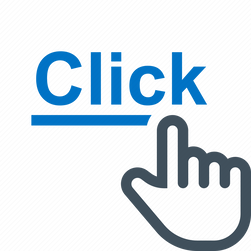 But when I went to click on the link to take me straight to the book’s page on Amazon …. it wasn’t there. Another simple marketing tool overlooked. The best time to sell one of your books to a reader is when they have just finished reading one of your books. There are a lot of psychological factors at work at that moment and it is important that the author makes them work in their favour. When a reader finishes a book that they have enjoyed they feel a sense of loss. It isn’t as severe as grief, but it is from the same source. They want to ease that feeling of loss and you, the author, can make that happen. It’s why we put sample chapters of our other books after the end of the story.  Strike while the iron is hot – get the reader when they are wanting more. But if you don’t include a link to where they can buy the next book, they’ll just say “I’ll look it up tomorrow.” The problem is that by tomorrow the feeling of loss has gone and they may already have started to read the next book in their TBR list, whether it is a paperback or an ebook. The moment has passed, and the sale may have been lost forever. Obviously, you can’t put a link in a paperback (but you can include the URL as ordinary text), but there is no excuse for not putting one in the ebook version. OK, if the next book hasn’t yet been published and isn’t even on pre-order, then you can’t put a link in. But you can go back and put the link in the moment the book does go on pre-order or is published. If you don’t write series, that’s OK. You just insert the link for the next book you published. Finally, there was the second sin that the same author committed.  There was no request for a review. We all know how important reviews are for authors when it comes to selling books. Some people always post them, some people never post them, but some people will post them if you give them a nudge in the right direction. Just a simple request along the lines of “Reviews are important to authors, so if you have enjoyed this book please post a review wherever you normally review the books you read”. You can even post a link to the sales page on Amazon (if that’s where you sell your books) just to be helpful. That’s all it takes.  We use a publication and marketing checklist when we prepare books for launch, just to make sure that we don’t overlook such simple things. We would recommend that you develop your own checklist so that you don’t forget the same little things. My takeaways from this blog are: 1. Everybody you meet is a potential new reader of your book(s). 2. Everybody you meet needs a way of remembering who you are, what your book is called and how to find out about your books, and 3. If someone has read your book, that is the time to persuade them to review it and to buy another of your books, so make it easy for them. And if you have forgotten, it isn’t too late to do it now. You may have lost sales in the past but that is no excuse to lose more in the future. As a well-known supermarket used to say in its adverts “Every little helps”. If you have enjoyed this blog, or found it informative, then make sure you don’t miss future editions. Just click on the button below to sign up for our newsletter. We’ll even send you a free ebook for doing so.
0 Comments
 We blogged about Publisher Rocket a couple of years ago, but Dave Chesson, the man behind the product, has just released a brand new version and it is even more powerful for Indie authors than ever before. For that reason, we are bringing you this update. Unfortunately, along with its new features has also gone a price hike. It now costs $199 (special offer price, correct at time of writing) for a lifetime subscription (that’s about £155 for us Brits). Naturally, you have to sell more books to repay that investment. What must be borne in mind, however, is that the tools Publisher Rocket provides actually help you to sell your books, whether you advertise or not.  The key thing about publisher rocket is its ability to provide you with genre, competitor and keyword information that makes sure that your book not only appears in searches on Amazon, but it appears higher up the results list, so that it is more likely to be seen. It also makes advertising on Amazon a whole lot easier by providing you with keywords appropriate for your book, so your ads are seen by the right people – people who read books like the ones you write. It is able to do this because it makes use of Amazon’s search history data. That data is gold dust when it comes to both publishing and advertising books and we, as Indie authors and publishers, have no way to access it by ourselves.  Amazon has become very concerned about what is known as “customer experience”. Basically, how easy shoppers find it to use Amazon. Part of that experience is the customer’s reactions to seeing irrelevant products in search results. Seeing a dark fantasy novel appearing in a search for high fantasy is probably not something that most shoppers would worry about. But seeing a Regency romance novel appear in a search for high fantasy is likely to irritate customers. If it happens a lot, it will irritate them a lot. And that is why Amazon have introduced a major change into their advertising process. The relevance of keywords has never been more important. Having irrelevant keywords in your ads can cost you more money and they may result in you selling fewer books. This is the exact opposite of what many Amazon Ad gurus used to advise, which was basically to load up your ad with as many keywords as possible, even if they were only remotely connected to the genre of your book.  I’ll run through this briefly, but it is important. When you set up a “sponsored product” ad with Amazon, using your own list of keywords, Amazon now scans your book’s meta data* and gives the keywords a “relevancy score”. The better that score, the higher up the pecking order your ads will be placed when it comes to the bidding process that decides which ads are shown to the customer in response to a search.. When the bidding process is carried out, the higher the relevancy score, the more likely it is that your ad will be the one chosen. If Ad A and Ad B both have a maximum bid of 50c set, then the ad with the higher relevancy score will be the one that is shown to the customer. This helps Amazon to prevent irrelevant ads being shown to the customer, which annoys them. What this could mean is that ads with lower relevancy scores have to spend more money to win the bidding process. Depending on their maximum bid setting they may never be seen at all. And an ad that isn’t seen can’t sell your book.  As publishers we use Publisher Rocket a lot to help us find the right category listings for the books we publish, to find the right 7 keywords to put into the book’s meta data and to find the right keywords to use in our Amazon Ads. To indicate how useful this tool is, we’ll tell you what happened the first time we used one of the new features. Like a lot of authors, we have always struggled to find the right 7 keywords to put into the meta data for the books we sell. This is why we have found Publisher Rocket so useful, because it helps to take the hard work out of finding keywords. One of the new features allows us to do a “reverse search” to find books like our own, and then find the keywords that are helping those books to sell, so that we can use them too.  So, we pasted the ASIN for our book into the box in Publisher Rocket, then pasted in the 7 keywords that we had used in the meta data for the book when it was last uploaded. The app then provided us with a list of books that Publisher Rocket, using Amazon’s search data, thinks are similar to ours. We were very, very surprised to find that all the books that were provided for comparison were non-fiction. The reason that we were so surprised is because our book is fiction. Now, things aren’t as bad as they might seem, because the book has actually been selling as a result of the searches that it showed up in. But it could obviously have been doing better if it had shown up in searches for fiction rather than non-fiction. The next bit of the process was a bit more time consuming, but necessary.  To find comparable fiction books we had to go onto Amazon (using incognito browsing) and do searches of our own to find our direct competitors. Once we had found the right sort of book, we pasted its ASIN into Publisher Rocket so that it could do its magic. We needed to provide 3 ASINs from books by different authors, to give Publisher Rocket enough data to work with. We then got back a lengthy list of search terms that had been used to find the three books we had identified. After that it was just a case of picking the seven most relevant terms for our book and entering them into the meta data and re-publishing it. So, if those same search terms are now used again by readers, our book will show up alongside those competitor books. But we didn’t stop there.  We run Amazon Ads for the same book and none of those keywords were included in the list of keywords for the ads. But now we were no longer limited to just seven selections, we could use more, which we did. So, in the space of about 20 minutes we were able to make both our meta data and our Amazon Ads more relevant and therefore more likely to be seen by the right readers - the readers that will actually buy the book. The most noticeable thing to be seen was that almost immediately we started to get more clicks on our ads. Quite clearly our book was now more relevant to the searches readers were doing. But more importantly, because the book was more relevant to the readers, more clicks were being converted to sales. Obviously, we can’t guarantee that you will experience similar results, but when marketing a book every little thing you do makes a difference and the most important thing to do when you launch a new book is to make sure that it is in the right categories and has the right meta data. If nothing else, Publisher Rocket will put you on the right path to success.  While we’re at it, we’ve discovered a way of getting 14 keywords into your meta data and it’s so simple we feel a bit stupid for not spotting it before. Most people set up their ebook before their paperback because it is less complicated and because an ebook can go on pre-order. The meta data for the ebook is then copied across to the paperback version’s meta data automatically when it is set up. Which means the same 7 keywords are copied across. But those keywords can be changed! Which means that you can use Publisher Rocket’s capabilities to use 7 different keywords for the paperback. Double the number of relevant keywords means double the chances of your books showing up in appropriate search results. The key messages for this blog are therefore: 1. The relevancy of the keywords in your meta data has never before been so important, 2. If you use Amazon ads, your ads may be more expensive and might not even be seen if your keywords aren’t relevant. 3. Finding more relevant keywords for your books is now much easier using the latest version of Publisher Rocket. To find out more about Publisher Rocket, click here On the website you can also gain access to a free course on using Amazon Advertising more effectively. You don’t have to buy Publisher Rocket, but you do have to subscribe (free) to the website.  And here’s a one time special offer for you as readers of this blog. If you don’t have Publisher Rocket, but would like to check the relevancy of you book’s keywords, we’ll run a free check for you. Just sign up for our newsletter (button below), then email us at [email protected] to claim your free relevancy check. You’ll get an email back from us asking you to provide some basic information about your book, so please check your spam folder to make sure you don’t miss it. You’ll also get the free ebook that we always give to new subscribers. * For those of you not sure what we mean by meta data, it is all the information you provide on the first page of KDP when you start to upload your book: Title, subtitle, blurb, categories and, of course, 7 keywords/phrases. FYI, a “keyword” can be up to 50 characters long.  There are so many new fads and trends in book marketing that we don’t always try them out when we come across them. We take a look at them, ask ourselves if they are really going to sell us more books and then decide if we are going to invest time on them or leave them until we have nothing more important to do. That was what happened when we received the email about the introduction of A+ content to Amazon sales pages way back in 2016 (was it really 8 years ago?). But we saw a video recently that made us go back and explore A+ content a little bit more to see what it might do for us.  Now, I’m not going to pretend that A+ content is going to propel your book sales into the stratosphere. But it may make a contribution towards moving some readers a little closer to buying your books. Its main advantages are that it is relatively quick and easy to use and, more importantly, it is free to use. First of all, what is A+ content? It is additional images and text that you can put onto the sales page of your book to either catch the reader’s eye or to provide additional information about the book. Why should you use it? It provides an opportunity to customise your sales page with additional images which can be used to fire up the reader’s imagination. Something got the reader to click through to the sales page, now you can present something even more exciting for them to look at. The images we have used below are for our Magi Box Set. How do you add A+ content on KDP? On your KDP bookshelf for the book, go to the actions button on the right hand side and click on the 3 dots (…) to get the drop down menu, then select “promote and advertise”. On the promotions page you will find the A+ content section lower down the page, beneath the advertising and Kindle countdown deals sections. Select the marketplace where you want the content to be displayed (for us that’s usually Amazon.co.uk) and then click on “Manage A+ Content” Amazon offers a lot of different layout options for the content, from product comparison displays or technical specifications to different layouts for images and text options. The most popular for books seems to be the type we have displayed above.  We use Bookbrush to create a lot of our images and they have a template that will produce the three sections from a single image. However, if you use other graphics packages they may also have suitable templates. If not, you may have to resort to cropping your images into separate portions. A+ content is uploaded into “modules” and the module we use is the ones titled “Standard Image & Dark Text Overlay”. Each of the 3 sections of the image is uploaded separately. This module offers the opportunity to include a headline and other text below the segment but, as you can see, we have incorporated our text into the images, so we just left the text boxes blank. You can use them or not. It’s entirely up to you. 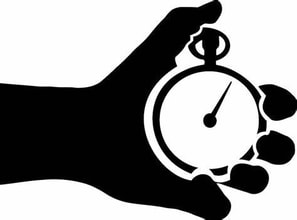 After that it is just a matter of assigning your content to the right book by pasting the ASIN into the relevant place, and then submitting the content for approval. Amazon suggests approval can take up to 7 days, but we have found that the A+ content is usually displayed on the sales page within 24 hours. Creating the images took us 10 minutes (using an existing image as our starting point) and creating the A+ content on KDP took us another 5 minutes, so this really is a quick and easy way of improving your sales page.  Aside: We used AI to create the image we have shown, and we make no apologies for that. It is the one place where we think AI can be of help to an author, by allowing them to create exciting imagery. Graphic designers may disagree with us, but we have to stick to tight budgets and AI allows us to do that.. As you apply the content to the sales page for a single market, it means you can use different content for different markets. For example, for Amazon.com you might want to use American spellings. For markets where English isn’t spoken, you can use images that use the appropriate language for the country – even if your book is only available in English. You can also use different images for different markets if you think that might affect sales. Images of scantily clad women or women with uncovered hair, for example, may not go down too well in some parts of the world. Amazon review quotes are great when included with A+ content, as shown in the image below. Firstly, the reader only has to scroll down the page a little bit to find the review from which the quote was taken. That makes the quote more trustworthy. Secondly, readers read what other readers recommend and you can't get better than a 5 star recommendation  Did using A+ content make a difference to sales? That’s hard to say. For the books where we added A+ content, we were already running advertising campaigns, so we don’t know what effect having the additional content had on sales. If the reader was responding to an ad, the A+ content may have helped to make the sale, or it may have made no difference. As we can’t get inside the mind of the readers we’ll never know. What we can say was that we started to use A+ content in June 2024 and we had our best sales ever that month. We aren’t going to try to claim a cause-effect relationship, but at the same time we don’t believe in coincidences. Maybe we got one extra sale thanks to A+ content, or maybe we got 100. Or maybe we didn’t get any additional sales and it was all down to the advertising campaigns we were running at the time. However, Amazon claims that having A+ content on a sales page can add between 3% and 10% to average sales volumes. As they are providing this facility for free, they must be making money from the use of A+ content from the extra sales or they wouldn’t be so generous. What we can say is that our A+ content added visual impact to our Amazon sales pages, and we think that is a good thing. We certainly think it is good enough to invest a few more blocks of 15 minutes’ worth of effort into the sales pages of our other books. If you have enjoyed this blog, or found it informative, then make sure you don’t miss future editions. Just click on the button below to sign up for our newsletter. We’ll even send you a free ebook for doing so.  We launched a new book, “Operation Chariot”, at the beginning of June this year. Given the popularity of our “Carter’s Commandos” series of books, we expected this new title to fly off the shelf, as fans of the earlier series came back to read this new offering. We were disappointed, The new book did sell, but not in the volumes we had expected. This puzzled us because we had put a lot of time and effort into marketing the book in advance of its launch. We were sure that the thousands of readers who had enjoyed Carter’s Commandos would be thrilled by this new book. So why wasn’t it selling as well as the Carter’s Commandos series, which is continuing to do well?  We checked the data from our marketing campaign and found that we were getting plenty of link clicks to the sales page. But the clicks weren’t converting to sales. Well, not as many sales as the number of clicks suggested we should be getting. If you are familiar with our previous blogs on marketing, you will know that we have always said that if you are getting link clicks but not getting sales, it means that there is something wrong with your book’s sales page. It might be your cover, it might be your blurb, it might be the reviews, or it might be the “free sample” as Amazon now call their “look inside” feature.  We analysed each of those four things in turn to see what might be putting readers off. We quickly ruled out a problem with the cover. The cover image has been used in all our marketing, so people have seen it already and clicked on the link. That is “social proof” (as it is known) that readers aren’t being put off by the cover, so seeing it again on the sales page is hardly going to put them off buying. This applies to the blurb too. The blurb is the primary text we use in our advertising, so if people have seen the cover image, read the blurb and then clicked the link, it means that the two things have encouraged the link click, not discouraged it. Reviews are a tricky one. This is a new book. It hadn’t been read before, so it doesn’t have any reviews. We’ll have to wait for the jury to return on that but at the time of writing this blog the book has garnered 5 "ratings", all of which are 4 or 5 star. So that just left the free sample.  We clicked on it and saw immediately what the problem was. The free sample opened up on the book’s “foreword”. This was a few paragraphs intended to introduce the reader to the new series, why it had been written and the differences in writing style that might be seen by readers of the “Carter’s Commandos” series. What it didn’t do, however, was get the reader engaged with the story. To get to that the reader had to scroll through the whole thing before they got to the proper opening of the book. Why was the free sample opening on the foreword and not on the first chapter? Because KDP and Amazon’s formatting engine interpreted the foreword as a chapter. So as far as Amazon was concerned, it was displaying the start of the story. Readers, however, could see that it wasn’t the start of the story and some of them were deciding not to scroll through to find the actual start. They just went back to scrolling through whatever platform they had been on before they clicked the link.  We had lost a potential sale. Worse than that, we had paid for a link click before we lost the sale! So, what could we do about that? The answer was simple, if a little unconventional. We moved the foreword from the start of the book to after the end. We even added a short explanation to it, to say why it was at the end and not the beginning. This only affects the Kindle version, of course. The paperback version still has the foreword at the beginning where it should be. But by the time the reader has discovered that, the book is in their hands, and they can flick past it if they don’t want to read it. But the free sample is always taken from the ebook version, so paperback readers will also be taken straight into the story when they read that.  Did it change anything? Yes it did. The sales graph for the book, which had been consistent but low, suddenly took a step upwards. More copies were sold each day from that point onwards. And it cost us nothing but a little bit of time and effort to find the reasons for the disappointingly low sales and to make the changes to the manuscript. So, if your sales aren’t doing as well as the link clicks from your marketing say they should be doing, why not take a look at the book’s free sample to see if the reader is being excited by what they see on the first page, or being bored by the non-essentials that are put into the opening pages of books. If you have enjoyed this blog, or found it informative, then make sure you don’t miss future editions. Just click on the button below to sign up for our newsletter. We’ll even send you a free ebook for doing so.  Writer’s groups on social media are very popular, and quite rightly so. Writing is, by its nature, a solitary life so it is nice to know that you aren’t alone. A real life writer’s group is better, but if you don’t have regular access to one of those, social media provides a useful alternative. People use writer’s groups to seek advice on a wide range of topics: writing techniques, gaining feedback on their work and, the reason behind this blog, they seek advice on book marketing. 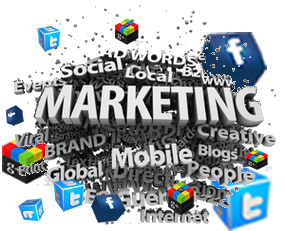 The problem with seeking advice on marketing on social media is that it as an extremely wide ranging subject and few writers have the knowledge and experience to more than scratch the surface. That means that the person seeking advice tries out a few approaches, many of them the same ones as everyone else is using, and some of the most basic techniques are by-passed because the people using social media don’t know enough about the subject.  As with any subject, you have to understand the basics if you want to understand how to apply the techniques. To use a metaphor, if you don’t know how the internal combustion engine works, you will never get as far as diagnosing a blocked carburettor as being the reason why your car won’t start. The same applies to book marketing. If you don’t understand the basics, you’ll never understand why all the things you are doing to promote your books aren’t working or, at least, not working as well as they might. As an example, some authors never get as far as understanding that using social media as a marketing channel isn't about plugging your book all the time. It's about building relationships with readers so that they want to know about your books.  As professional book marketers (that’s what publisher are, really) we contribute to those social media groups when we think we can offer good advice and we stay quiet if we aren’t so sure. One of the bits of advice we offer on a regular basis is to study marketing properly. Marketing of any product needs a wide range of skills and knowledge. Within marketing itself the professionals tend to specialise in certain areas and hardly scratch the surface in others. If they need a specialist in an area they aren’t so well versed in, they seek one out. So, for amateurs, it is even harder to know where to concentrate their efforts. 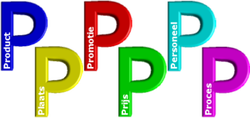 Marketing is a subject that continues to evolve. The “marketing mix” as it is known (aka the 5Ps, 6 Ps, 7Ps or even more Ps depending on who you listen to), first started to be discussed in the 1940s, long before Tim Berners-Lee came up with the idea for the internet, so marketing has had to adjust to cope with new technology while at the same time having to continue to deal with physical marketplaces such as bookshops. Take the P for People heading. This used to mean the people who sold the product – their recruitment, training, personalities, product knowledge and sales skills. But so much of our modern marketplace is now on-line, where people play almost no part in the sales. We have to hope that the website designers know what they are doing as they are now the people who influence the direct sales. The real salesperson is now the author or publisher, as they decide what words and images to use on the product page. Never before has cover design, for example, been so important in selling a book (that's covered by another of the Ps: Product). The P for People topic is now more about who reads the books – the demographics of particular genres, or “who reads what”.  If you are putting a book on the shelves of bookshops then you don’t have to worry about that so much. Books sellers have their stores laid out in subject order and people of the appropriate age, gender and interests know where to find the books they like. But if you are trying to promote a book on social media you have to know where on social media your target audience is likely to hang out. That’s the opposite of the bookshop. Which is why asking for marketing advice on social media isn’t really going to help an Indie author. Let’s face it, if you are asking a question on Facebook and it is being answered on Facebook, then the chances are that the person answering the question probably knows quite a lot about Facebook, but probably doesn’t know much about how to market on TikTok or Instagram. For the modern marketplace, the Indie author has to be almost as knowledgeable about marketing as his counterpart in one of the Big 5 publishing houses. And to become that knowledgeable requires proper study, not asking a few random questions on social media.  I’m not talking about a full 3 year course of study at a university (though it would be great if you can afford the time and money to do it), but I am talking about study of some sort (don’t worry, I’m not going to try to sell you a marketing course, because we don’t sell one). One of the owners of Selfishgenie Publishing has a Masters Degree in business management. He knows quite a bit about marketing. But when he decided to set up the company he didn’t realise how much more he was going to have to learn. In the few years that elapsed between him picking up his MBA certificate and setting up the business, the whole world of marketing had moved on. The internet was now King (or Queen if you prefer, or even President). What worked for business in the early years of the new millennium was no longer working. That meant he had a lot of catching up to do, so he did what any sensible person would do and went back to school. Not full time residential school, but part time online learning. And if you need to learn about marketing, that is what you have to do too.  Some people are reluctant to go back to school, however. We can’t understand why. You are not a failure just because you don’t know something. In fact, it is a mark of maturity to be able to admit that you don’t know some things, especially if they're in an area that you have never studied. Besides, only you know that you are studying, unless you choose to tell the world. Yes, it can cost money – but it doesn’t have to. There are organisations that provide free training and at the end of this blog we will provide a link to one of them. And you can sign up from anywhere in the world. OK, you can ask questions on social media and the answers may sell you a few books, but they will never sell you as many books as a fully developed marketing strategy, backed up by a plan and the knowledge and resources to deliver it.  That can only come from in depth knowledge of the subject. So, if you want to climb the ladder of success to become a bestselling author, we advise going back to school. For information on free online training courses in marketing, click here. If you have enjoyed this blog, or found it informative, then make sure you don’t miss future editions. Just click on the button below to sign up for our newsletter. We’ll even send you a free ebook for doing so.  Do you know what a datapoint is and why it is important to authors? No, neither did we until a few weeks ago. But knowing about them may explain why some social media advertising is less than effective. Essentially a datapoint is one tiny bit of data that an algorithm can use to connect it to another datapoint. Think about it the way you would think about a pattern matching game such as “Mahjong” (the computer game, not the ancient Chinese tabletop game). If you find tile A in Mahjong and then find a second copy of tile A, you click on the two of them and you remove them from the puzzle, at the same time as winning points.  Every time you do something on social media, you create datapoints which the platform then uses to direct advertising towards you. You are creating multiple sets of Mahjong tiles which the algorithm will use to match the same tiles that advertisers have used. Every time you “like” a post; every time you comment on a post; every time you share a post, you create a datapoint for the platform to work with. Even the words you use in your posts and comments become datapoints. For example, a friend posts an image of a donut they are about to eat. If you “like” the post, you tell the website’s algorithm you that you like donuts. If you comment on the image, you create more datapoints related to donuts.  It should, therefore, come as no surprise if you start to see advertisements for donut brands or donut shops on your timeline shortly afterwards, because the algorithm now knows that you have an interest in donuts, and it can make money for the platform by targeting you with donut related adverts. The reality may be that you “liked” the post because you like the friend, not the donut (you may actually hate donuts), but the algorithm doesn’t know that. It has made up its mind that you like donuts so that is that. Knowing this can help you when you use social media for advertising, because the platform wants to know which users to send your advert to so that they see it. Because when they see it they may click on it and then the platform can charge you for that click.  So sending the ad to the right people is not only important for you, it is important for the platform. So, this is something you need to know about if you want to use social media efficiently for advertising. For example, if you pay for an ad on Facebook, its advertising algorithm goes looking for the right people to whom it should show your ad. It could show it to everyone on the platform, but that isn’t efficient because not everyone will interact with your ad, so it won’t earn Facebook any money. First it scans all the content in your ad (the image, the text, the link etc) and converts it into data points. Then it goes looking for users to match your ad up with. To extend the Mahjong analogy, if your ad is tile A, the algorithm looks for users who also have tile A. How does it know? Your book is the equivalent to the donut we used in our analogy. If your ad includes references to fantasy, the algorithm goes looking for users who have fantasy related datapoints recorded against them.  But the algorithm won’t send the ad to people who have “romance” in their datapoints. We will use Facebook (Meta) as an example, but all the social media advertising algorithms work the same way. Your ad for your book works like the ad for the donut brand or donut shop. It looks for people who (a) like books, (b) like books in your genre and (c) anyone who has ever interacted with posts that use any of the words in your ad and who therefore might be interested in your book. Point C in the para above is the most important if you advertise on social media, because it can make the difference between your ad being seen by the right readers and it not being seen at all. But success breeds success for the algorithm. When it finds a user who clicks on the link in your ad, it then uses that user's other datapoints to find more users like them. It "learns" from its successes to improve its targeting of users. Typically, authors use the blurb for their books as the primary text for their social media ads. That’s fine, it makes sense to do that. However, it can also cause problems. A good blurb will be between 250 and 350 words long. Take out all the common words: prepositions, pronouns, conjunctions, adjectives, adverbs etc which are useless as datapoints (because they are so common) and you are probably left with less than 100 datapoints (proper nouns, nouns and verbs mainly).which can be used to connect your ad to the right audience.  Let’s say you write fantasy or sci-fi and you use a lot of made up names for characters and locations in your books. Now let’s say that you use some of your made up words in your blurb, which forms the text for your ads. They are useless as datapoints because they won’t appear as datapoints that Facebook users have reacted to in the past. They have never heard of the land (or planet) of Gigariga and so Facebook’s algorithm won’t be able to find any datapoints that relate to Gigariga. Which means that using your blurb may have reduced your potential number of datapoints from around 100 to a much smaller number, which means that Facebook will show the ad to fewer people. It may even show the ad to the wrong people, the ones who would never think of buying your book. The lesson to be taken from this, therefore, is the same one that applies to using Keywords on Amazon. Make sure you use the right datapoints. This may mean re-writing your blurb.  If your book is a fantasy, then you have to use that word and as many synonyms for it as possible in order to maximise the number of fantasy readers who will see your ad. The same applies to other datapoints, such as action, adventure, mystery, challenge and thousands more words that you might use. You don’t want to be too general in your wording, so that your ad is shown to readers who never read fantasy, but at the same time your datapoints mustn’t be so narrow (like using your made up words) that Facebook can’t find anyone to which it can show your ad. Just copying and pasting your blurb into your Facebook ad may seem to be quick and easy, but it may also be sabotaging your efforts and causing you to waste money. So, think about those datapoints and make sure they are present in your advertising copy. That is what professional copywriters do every day; which is why their advertising works. If you have enjoyed this blog, or found it informative, then make sure you don’t miss future editions. Just click on the button below to sign up for our newsletter. We’ll even send you a free ebook for doing so.  You would think that a box set of 9 full length sci-fi novels, each story 80k+ words in length, priced at £9.99 ($9.99 if you are in the USA) would be flying off the shelf. But it wasn’t. We were wondering why, so we got the team together in Selfishgenie House (a Zoom call made from my living room, to be truthful) and had a bit of a brainstorming session on the subject. Along the way we started to discuss the psychology of purchasing and how it might be working against us. The box set is priced at £9.99, which we think is a bargain. But for the reader that may not appear so. Perhaps they are thinking “If I read the first story and don’t like it, I’ve wasted 8/9ths of my £9.99”.  Why would they think that? Because, at some point, they have bought a box set and that has happened to them, so they don’t want to risk doing it again. We know that books at much lower prices than the box set don’t sell because readers don’t want to take a risk on an author that isn’t well known. So the possibility must exist that people don’t want to risk their money paying more for a box set they may not like. The author of The Magi series is quite well known and has a strong following for a different series. The problem is that the other series isn’t sci-fi, so most sci-fi readers probably don’t know about him and his books. So, as problem solvers, what could we do about this barrier to sales for a box set that should be flying off the shelves but isn’t?  We knew that Kindle Countdown deals had worked for the author’s other series. We had sold the first book of the series at 99p and then got lots of follow-on sales for the rest of the series at the normal price. Would that also work for the sci-fi box set? We decided that maybe we should put book 1 of the sci-fi series on a Kindle Countdown deal for 99p (99c USA) and then promote the hell out of it. But then one of our team pointed out that wouldn’t work unless the reader also knew that they could get the box set for a bargain price. So, how could we get that message across? If we tried to make it part of the advertising copy, it would be far too cumbersome, something along the lines of “Get a sci-fi book for 99p and then, if you like it, buy the whole series for £9.99.” It hardly rolls off the tongue, does it?  But there was something we could do. We could strike while the iron is hot. If someone has just read a book they liked, then the time to sell them the next book in the series is right then, immediately after they have read the words “The End”, because they are probably wanting more of the same. So, it should also work if we do the same thing for the box set. Which is what we decided to do. We edited the manuscript for the ebook of the first book in the series and added this bit immediately after the “The End”. “An Kohli* says, “If you have enjoyed ‘The Magi’, the first book in the Magi series, you can read books 2 to 9 for the bargain price of $9.99 (USA) or £9.99 (UK) with ‘The Magi Box Set’.” Find out more here.” * An Kohli is the name of the main character in the book. We then uploaded the new manuscript to KDP, set the dates for the Kindle Countdown deal and waited to see what happened. Did it work? We are delighted to say that it did.  The 99p book flew off the shelf, though we did pay quite a lot for advertising over the period of the Kindle Countdown deal. But then the box set started to sell as readers bought into the whole series. That was enough to pay back the advertising costs and then reap the rewards. But that wasn’t all. We started to get KENP reads for the box set too, off the back of the same advertising campaign. OK, we don’t earn as much from KENP reads, but money is money! Would the same tactic work for your series box set? We see no reason why not.  Authors are often reluctant to discount their books because they see it as devaluing their brand. Fair enough. If that’s the way you think, then it’s your privilege – but how are your sales looking from on top of your high horse? Some authors have a better reason for not discounting their books, which is that if someone buys the book at the cheaper price, they aren’t going to buy another copy at full price.  But this approach is different, because it uses a sprat to catch a mackerel as we say over here (or my mother used to say, to be more accurate). Even if you haven’t got a box set to sell, but do have more books in the series, the same principle works, though you do have to sell more individual books to recoup your advertising costs. There are other factors that come into play when using this approach. First of all, the surge in 99p sales pushes your book up the Amazon sales rankings. “The Magi” jumped from around 500,000 in the Amazon rankings to 18,000 literally overnight. Its category rankings were even better, at 117, 129 and 196.  Many readers only buy books that other people are reading, so the book appearing to be popular, by being well up the sales rankings, is a definite selling point. The book also starts to appear in a very important list on Amazon, the "also bought" list: “People who bought (insert title of another author’s book) also bought (insert title of your book)”. That list (usually shown in a carousel format) influences some readers, again because they like to read what other people are reading. They feel reassured by other people’s reading choices. And, finally, even though the book only cost the reader 99p, some of them will still review it, so you can gain a few extra reviews for your book which should, if it’s a good review, encourage more people to buy, probably at full price if the Kindle Countdown deal has ended.  And you can do the same thing every 3 months, because that is how often you can run Kindle Countdown deals. Paying for advertising for a book that only costs 99p appears to be a taking a big chance and we would agree that there is a risk there. But with risk comes reward. People who never take risks never achieve anything and that includes not achieving best-seller status. We can’t promise you that your series or box set will start to fly off the shelf. All we can tell you is that after taking this approach, we had a considerable increase in the sale of our box set. If you have enjoyed this blog, or found it informative, then make sure you don’t miss future editions. Just click on the button below to sign up for our newsletter. We’ll even send you a free ebook for doing so. We very rarely recommend products on this blog, so when we do you can be sure of two things. (1) We haven’t been paid to make the recommendation and (2) the product we are recommending has been of some tangible benefit to us.  This is the case with “Meta Ads Mastery for Authors”, a training course provided by Matthew J Holmes. To prove that it works, later in the blog we have posted a graphic showing the increase in Amazon sales we experienced over a 90 day period, for just one of the series of books we publish. Now for our upfront warning. This isn’t a “magic bullet”. It is not going to turn you into a bestselling author overnight. It will take time to learn the strategy and to refine it to make it work for your books. It will also involve some financial risk taking. Most importantly, it can’t turn a bad book into a bestseller (nothing can do that). BUT, if you stick with it, you will get results and those results are going to repay your investment.  Now, fair warning, for Indie authors adopting this strategy - it requires strong nerves. The financial outlay is far higher than we have had to make when we have tried out other marketing tools. It is also quite time consuming both in terms of working through the training materials and then trying out the lessons learnt. But as the old saying goes “You have to speculate to accumulate” and speculation, by its very nature, is risky and not for the faint hearted. However, we wouldn’t be recommending this product if the lessons it teaches didn’t work and here is the proof. We paid for the product on 2nd March 2024 and started to implement the early lessons on 4th March. The graphic below shows results for first 5 months of the year. The red arrow on the graphic shows where we started to use this new strategy (sorry we’ve redacted the actual royalties and sales data, but that is commercially sensitive information). In terms of orders, you can see a dip in month 2 of our experimental period. That is because the orders for month 1 were skewed by a 99p promotion that ran for 7 days. When the orders for that are discounted, the peak for month 1 is much lower, so the overall upward trend is more visible.. To assess whether our ad campaigns were successful or not we have used a calculation called “Return On Advertising Spend” (ROAS) which Matthew teaches in his course.  Essentially, this is the amount of royalties we received divided by the amount of money we spent on advertising, which gives us a number. If the number is greater than 1, our ads earned us more money than they cost. If they are less than 1, they cost us more than we made. We have included some of the cost of purchasing Matthew’s course in the ROAS calculation, as that is part of our costs. We decided to allow 12 months to recoup the cost, so we allotted 3 months’ worth of recovery to the ROAS calculation. Our ROAS for the 90 day period was 1.2 which means we made £1.20 in royalties for every £1 we spent on advertising. While that may not sound every exciting, when you scale that up to the hundreds or even thousands of pounds, the profit actually starts to look very impressive.  We also saw a considerable increase in KENP reads (KundleUnlimited (KU) downloads) during the same period, taking us from around 30% of total income to over 50% of the total. That means our ads reached a lot of KU subscribers. The book we were advertising is Book 1 of a series. We saw an up-tick in the numbers of sales we were getting for Books 2 to 9 during our 90 day experimental period, but some downstream sales won’t appear for several weeks yet, so we have to take them into consideration, but we haven’t factored them into our ROAS calculation because we don’t want to count our chickens before they are hatched.  An unexpected bonus during this period was for increased sales of the audiobooks for the series, of which there are 3 so far. During the 3 month testing period, sales surged to exceed the total for the financial year 22/23 and 23/24/ They now make up 40% of the lifetime total for the 3 books. While the sales link took the Facebook users to Amazon, it appears that listeners to audiobooks saw the ads and went looking for the audiobooks on their preferred sites. But there is no doubt that there is a large financial risk to using this strategy and that risk may not be acceptable for some authors, even though we are able to demonstrate through our own experience that the risk is reasonably low. Which is fair enough. It’s your money so it is you that is taking the risk. But we took the risk so you didn’t have to (you’re welcome).. Matthew does explain that you can spend less each day on your advertising, but that means it will take longer to achieve meaningful results. At the end of the day, it is up to you how much risk you are prepared to take in order to benefit from the sort of rewards that we have shown in our graphic. If that hasn’t convinced you that the product is worth the investment, then nothing will, so thank you for reading this far and we’ll see you next week for our next blog. For those that are still making up their minds, please read on for the rest of the product review.  What the course teaches you. The first thing you are taught is that an ad can’t sell your book. Your book has to sell your book. In other words, a Facebook Ad may get a click that takes a reader to Amazon (or wherever you sell your books), but if all isn’t right with your product page then the click won’t convert to a sale. Matthew recommends running your trial ads on a book that is already selling, so that you can be reasonably confident that your product page is OK, thus removing any confusing “noise” (my word). So, if your book isn’t currently making any sales, despite all your marketing efforts, look at the cover, the blurb, the free sample and the reviews. The barrier to sales is probably one of those 4 things (or maybe all 4). Fix that before you do anything else.  Whether you are new to Facebook Ads or not, the course aims to teach you a new strategy for using the platform for advertising, some of which may go against what you have been taught in the past. It provides tools and techniques both to improve your audience targeting, so you get more bangs for your advertising buck and also identifies better ways of creating ads so that they are more appealing to Facebook’s users. It also takes you into parts of the Meta platform that you may not have entered before, so there is a lot to be learnt.  One of the expressions Matthew uses is “stop the scroll” (which we blogged about in April). In other words, create ads that stop people from scrolling past them, which is the first battle to win for any advertising campaign on any platform. If your “creative” (the combined image, headline and text) doesn’t stop people scrolling, you won’t sell any books. Matthew recommends you run your trials over a 90 day period. This allows you enough time to create a variety of different ads to learn from them, to find out which techniques work best for your book(s), what sort of images work best, what sort of text etc. And those things will vary from genre to genre (its why we are only writing this review now, when we bought the product in March). That doesn’t mean you have to wait 90 days to see any results (as we have shown), only that you will start to get the best results after you have been learning for around 90 days. From experience, however, we suggest that by the time you get to the end of the first 30 days you will be earning enough to finance your experimentation during days 31 to 90.  One of the things the course focuses on is relating your ad “creative” to your sales so that you can learn from your ad’s performance. Facebook is very good at spending your money. They will show your ad to as many people as possible in order to get as many clicks as they can so they can spend your budget. However, not every ad you post is going to perform equally in terms of clicks. Some ads will get you more clicks than others and it is important that you know which are working hardest for you. You will want to “scale” a good performing ad (ie spend more money on it) so it sells you even more books and you will want to turn off poor performing ads so you don’t waste money on them. All of that is discussed during the course. In addition, you will want to identify the type of creative that is getting you the best results so that you can create similar ads and try them out. Image A may look good to you, but image B may get you more clicks because the people who see it like it better. The same applies to text and headlines. Finding out this sort of thing is gold dust in advertising terms.  The course talks a lot about how you analyse your data so that you can both scale the ads that work and to identify the sorts of creative that works best for your genre. Different genres attract different readers who are attracted by different creative styles. For some people this will seem scary. For some people, data is something that someone else analyses and the thought of analysing their own data may scare the pants off them. However, listen to what is being said, because there are valuable lessons to be learnt. You may not have either the time nor the inclination to try everything that is taught, but the more you try, the more you learn about your ads and the better you can become at creating and running them. While the course may generate sales wherever you sell your book, it works best with Amazon. That is because using something called “Amazon Attribution” (taught as part of the course) you can track sales generated from your FB ads directly. That means you get the clearest indication of which ads are working and which aren’t. That isn’t possible for other publishing platforms or from your personal website. You can track how many clicks you get that take people to other platforms, but you can’t track how many of those clicks are converted to sales. While you may get sales, you won’t know if they are ”organic” or if they have originated with FB ads. That isn’t a problem with the course, it is a problem with the way sales can be tracked on those other platforms.  As we have said, the strategy works, which is why we have given it a very rare (for us) 5 star rating. Investing the time to learn it is going to benefit your book sales and it really does deliver improved sales. If it didn’t, I wouldn’t have expended so many words on telling you about the product. Overall, we here at Selfishgenie Publishing are pleased to recommend “Meta Ads Mastery for Authors” and you can find out more about the product here. If you have enjoyed this blog, or found it informative, then make sure you don’t miss future editions. Just click on the button below to sign up for our newsletter. We’ll even send you a free ebook for doing so.  Advertising is advertising, right? You pay for an ad and they all do the same job. No. Different platforms have different purposes, which means that users use them differently. A reader may be a reader on Amazon, but on Facebook they aren’t a reader at all. While they are on Facebook they are social media users, which means their head is in a different space. That means that you have to approach advertising on different platforms in different ways. To use the big word, you have to adopt a different strategy depending on where you are advertising. Even generic terms such as “social media” aren’t that helpful, because different social media platforms require different approaches to how you use them for advertising. Let’s start with the big differences between Amazon and social media, when it comes to advertising.  If someone is on Amazon it means they are there to buy something. That means the sale is half way to being made because there is no reluctance to spend money. The main barrier you have to cross is the one that makes the reader buy your book instead of someone else’s. On social media people are there for different reasons. Some want to keep in touch with friends and family, what is happening in their local area, they are communicating with people about hobbies, memories, work etc or they are just filling in time watching funny cat videos until they decide to do something else. They aren’t there to buy anything (there is one exception to that, which I’ll cover later), That means you have a large barrier to cross before you even start to tell them about your book.  You have to get them out of their “social” mindset into a “buying” mindset. Or, at the very least, a “tell me a little bit more” mindset. That isn’t easy to do. Which means your adverts have to be pitched in a different way. To go back to the big word used earlier, you have to adopt a different strategy. So, let’s talk about Amazon advertising strategy first as it is actually the best place to advertise. Why? For the reason I gave up above. Its users already want to buy something. 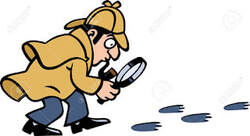 Amazon is a search driven selling platform. While Amazon may suggest things for people to buy, based on their previous purchases (Amazon is still trying to sell me Lego based on a single purchase made 5 years ago) most users have some idea what they want to buy and they go looking for it, using Amazon’s search bar. They may have a very specific idea of what they want, such as “romance involving pirates and buried treasure”, but some have less specific needs and input single or double search words such as “fantasy” or “cozy mystery”. They may even be looking for books by a favourite author, so they just enter their name in the search bar. Which means you have to adopt a strategy that allows the readers to find your books based on searches such as that. And when it comes to author name searches, just because they are looking for the latest Lee Childs book, it doesn't mean they won't buy your book at the same time if you can catch their eye. There are three parts of your book’s description that you can use to help readers to find it. The subtitle, the blurb and the 7 keywords that you put in the book’s metadata* (if you publish using KDP). Using the right words for the genre of book helps your book to show up when you run what Amazon calls an “automated category ad”.  That is the simplest form of ad to set up on Amazon, as they do most of the work for you. But it is also the least efficient because it relies on you and your readers thinking the same way and your readers selecting the keywords that you thought of when you set up your metadata (which probably didn't include author names) A more targeted strategy is to set up ads that use lots of keywords, so that you go beyond the 7 that KDP allows you (you may not even use KDP as your publishing platform). This is where tools such as Publisher Rocket come in handy, because that analyses Amazon’s sales data to see what search words were used to sell a book. So, if your book is similar, you can use the same keywords so that searches show your books to readers in the search results. But even if you don’t have Publisher Rocket, you can still generate lists of keywords because a lot of them are author names and their book titles. You can generate random search terms and see which ones produce results for books similar to yours. You can also search for books like yours and use the names of the authors and their titles as keywords in your ads. FYI, incognito browsing is best for this so that you aren’t shown books like the ones you usually read. You should be looking for about 150 -200 keywords for each ad you run.  Now to social media strategy. You can use keywords for that too – they call them hashtags – but the first barrier you have to cross is shifting people from their “social” mindset to “reader and buyer” mindset, which is no simple trick. We are so used to ignoring ads on social media nowadays that unless we see something really eye catching we just scroll past it. We posted a blog a couple of weeks back which was about “stopping the scroll” (see our archive for April 2024) and that is what we are talking about here. But different social media platforms attract different audiences, and those audiences are looking for different things, That means that the advertiser has to adopt different strategies on different platforms if they want to stop the scroll. If you want to advertise to younger readers you need to be on TikTok and that is very much a music and video based platform. If you can combine the two effectively then you have a chance that your ad will be seen,  But it is also a platform where people talk, so a talking video advert could work too. People like to see other real people on TikTok so if you are a person and you put yourself in front of the camera and start talking, you are probably going to be seen. Obviously, that isn’t going to suit everyone. Some people run away screaming when a camera is pointed at them. If that is you then fine, but it doesn’t mean you can’t use TikTok. You just have to use your creativity in a way that allows you to get your message across in a visually appealing way without you having to show your face on camera. Instagram and Pinterest go together in some ways, as they both rely heavily on images, but just putting an image of your book cover on them isn’t the best idea. The image has to be more than that. It has to stop people in their tracks and get them to say “Wow, I wonder what that is about?”. The image doesn’t even have to feature your book cover. It just has to appeal to people who like reading your genre of books.  Pinterest is a particularly good place to advertise because about 50% of users do go on it looking for ideas for things to buy, which is way more than any of the other social media platforms. It is also a good place to go if you are targeting women readers because they use it for buying more than men. X (Twitter as was) is a bit of a bear garden and I’m not sure it even counts as “social media” anymore as many of the people who use it are far from sociable. But it must sell stuff or businesses wouldn’t use it for advertising. We don’t use it for that, because we aren’t sure that it’s the right advertising channel for us. We do, however, use it as a social media platform and we promote our books on it, but we don’t pay for advertising. Finally ,we have Facebook. We use Facebook for advertising almost as much as we use Amazon Ads and it does work, once you have developed the right advertising strategy. 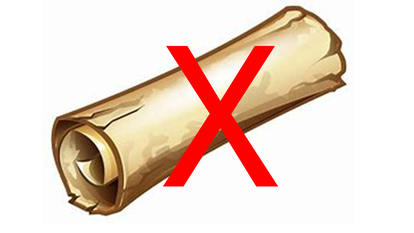 Research has shown that it is the image that stops the scroll. Then the user reads the headline (the words immediately under the image) and then they read the primary text (the main body of the ad). So, you have to “stop the scroll” with the image, hook the reader with the headline and then sell them the book with the primary text. If they like what they have read, they’ll click the link. They may not click the link just because they like the image, so the three things have to work together. That gives you 3 variables and you may have to try different combinations to find the one that is a winner. Without that Facebook will end up spending a lot of your money and you won’t get much in return. If you want to use your book’s blurb as the primary text, you may need to develop different versions of it to appeal to different readers.  The lack of research into what readers find appealing may be why some authors find it difficult to get Facebook Ads to work for them, because they try just one combination of image, headline and primary text and when it doesn’t sell them any books, they give up. We have proven this for ourselves, using 3 different images but with the same headline and primary text. One image always shows up as being more effective than the other two. We then reduce the spend on the less effective ads and increase it on the more effective one. Facebook even has technology (called Digital Creative Testing (DCT)) to help you find combinations that work. You can upload several different images, several different headlines and several different primary texts and Facebook will run ads using the various combinations. You then analyse the results and decide which ones are winners and which are costing you more than they make back. 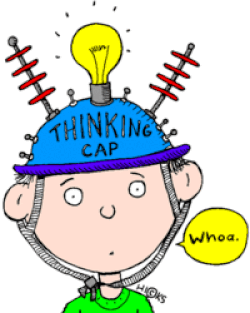 Finally, you have the book promotion sites (Bookbub, BooksGoSocial, WrittenWordMedia et al) which, for a price, will send out promos for your books to their social media followers and email lists. They have rules of their own about what you can and can’t do when using them and they vary too much for us to cover them here. But the same basic idea of developing a strategy that suits the platform applies to them, in just the same way as it applies to Amazon and to social media. So, our key message for this blog is to think about where you are going to advertise, think about why people are using that platform, then develop a strategy that will appeal to that sort of user. Don’t just assume that an ad is just an ad, because it isn’t. * Metadata in book publishing terms means the combination of book title, subtitle, genre, blurb and any keywords you are able to enter. They are critical when you are trying to get your book to show up in search results. If you have enjoyed this blog, or found it informative, then make sure you don’t miss future editions. Just click on the button below to sign up for our newsletter. We’ll even send you a free ebook for doing so.  One of the common questions seen in writers’ groups on social media is “How much do authors earn?” The question comes in a variety of forms, some trying to disguise the fact that the person asking the question is only interested in making a quick buck and thinks that being an author may be the way. But some people genuinely see being an author as being the road to making a decent living. Of course, for some authors, it is a way of making a decent living. Indeed, some authors become very rich through their writing. But for Joe (or Josephine) Average, the average author, is it a realistic way to make a living? We would say it probably isn’t. I’m afraid we have the data to back that up as there has been a lot of research into this over the years. 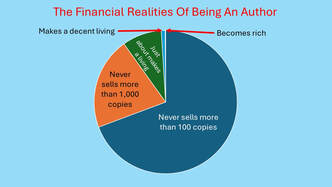 Let’s start with some basic facts. 70% of all the authors who publish or are published, never sell more than 100 copies of their books. Some of that is to do with marketing, of course. If no one knows about the book they can’t buy it. Some of it is because the books are about subjects that don’t have a wide audience appeal. They are either on very niche subjects or they are memoirs about lives that just aren’t that fascinating, but the author thought they were. Finally, they just aren’t very good books, certainly not as good as the author thought they were, and can’t garner enough good reviews to encourage people to buy them. Of the remaining 30% of books published, 70% of those won’t sell more than 1,000 copies. That’s about 21% of the total number of books published (so we’re now up to 91% of the published total). Again, the reasons are varied, and marketing once again takes centre stage, but the fact that the book has sold between 100 and 999 copies suggests it isn’t a bad book, per se. But that leaves just 9% of books published selling more than 1000 copies. However, you need to sell about 30,000 copies to make a living wage. That is to say, a wage good enough not to have to do any other work. Even then that will depend on other factors in your life such as the size of your mortgage (or amount of rent you pay), the size of your family and your lifestyle. One person’s living wage is another person’s poverty – or wealth. Less than 1% of authors make what we might regard as “decent” money and only 0.1% ever become rich from their writing. And even then, most of their wealth doesn’t come from their books, it comes from the TV and film rights for their books. So, if you haven’t written the first word of your novel, how do you know if you are going to be in the 99% or the 1%? You don’t. 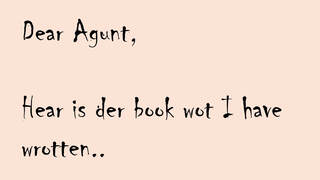 If you get as far as completing a good draft you start to get some indication of your likely success from the reaction to your work from agents, though it takes some time to gather enough data. One rejection doesn’t mean much. It just means that the agent may be too busy or doesn’t really like your genre, or just didn’t get your “message”. Ten rejections should start the author thinking a bit, but it still isn’t conclusive evidence. According to publishing legend, J K Rowling received at least 10 rejections for her first Harry Potter book. But once you get to around 20 rejections the message should be becoming clear. Even then, the message only applies to that book. Some authors query three or four books before they get one accepted by an agent. What made that book different from the first three? The author will probably say there was nothing different about it. But the agent thought it was different enough to take a chance on it, so there must have been something. 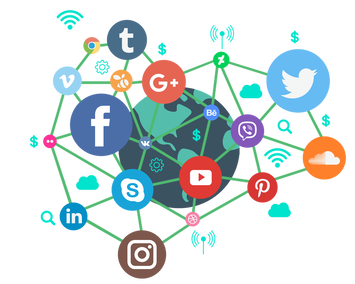 But even then the story isn’t finished, because there is a growing body of self-published authors that are making 6 digit and even 7 digit royalties. So, the agents obviously don’t know everything when it comes to what makes a best-seller. But what makes those 6 digit self-published authors different isn’t necessarily their writing. I have read some of their books. They are OK, but I wouldn’t call them remarkable. In fact, some could be described as mediocre – but they still sell. What is different is that their authors invest a lot of time, effort and (probably) money into marketing. They have become expert at it, which is how they are able to sell so many books. As a small publisher, we have seen this for ourselves. When we market a book, we sell copies. When we stop marketing it, sales dry up very quickly. Authors think that what they are paying us for is editing, cover design, proof reading, formatting etc. Sure, we do those things, but the authors could pay anyone to do those things for them. No, what we are really being paid for, and the way we make our money, is book marketing. Yes, we do the other stuff, but until the book sells we don’t make a penny and neither does the author. Marketing pays for everything. And, while trad publishers may tell you otherwise, it is in the marketing of books that they also make their money. Everything else they do costs them money. Editors, cover designers, proof readers and the rest of the publishing team, all have to be paid before the books have sold a single copy. So, if you want to make money out of being an author, you must first learn how to be a marketer. Once you know how to do that, then start writing your book. Doing it the other way around only leads to disappointment, because it takes longer to learn to be a successful marketer than it does to write a book.  And if you do that, you might just make a decent living out of writing. Even if you are certain your book is going to find an agent and be trad published, you can’t be certain that will happen. So if/when the horrible truth hits you, it is already too late. It’s fine to have a dream that one day your writing may make you rich but keep yourself grounded with the knowledge that it may not happen. And even if it does happen, it may take some time before it does. To quote Kipling “If you can dream and not make dreams your master;” If you have enjoyed this blog, or found it informative, then make sure you don’t miss future editions. Just click on the button below to sign up for our newsletter. We’ll even send you a free ebook for doing so. |
AuthorThis blog is compiled and curated by the Selfishgenie publishing team. Archives
June 2025
|





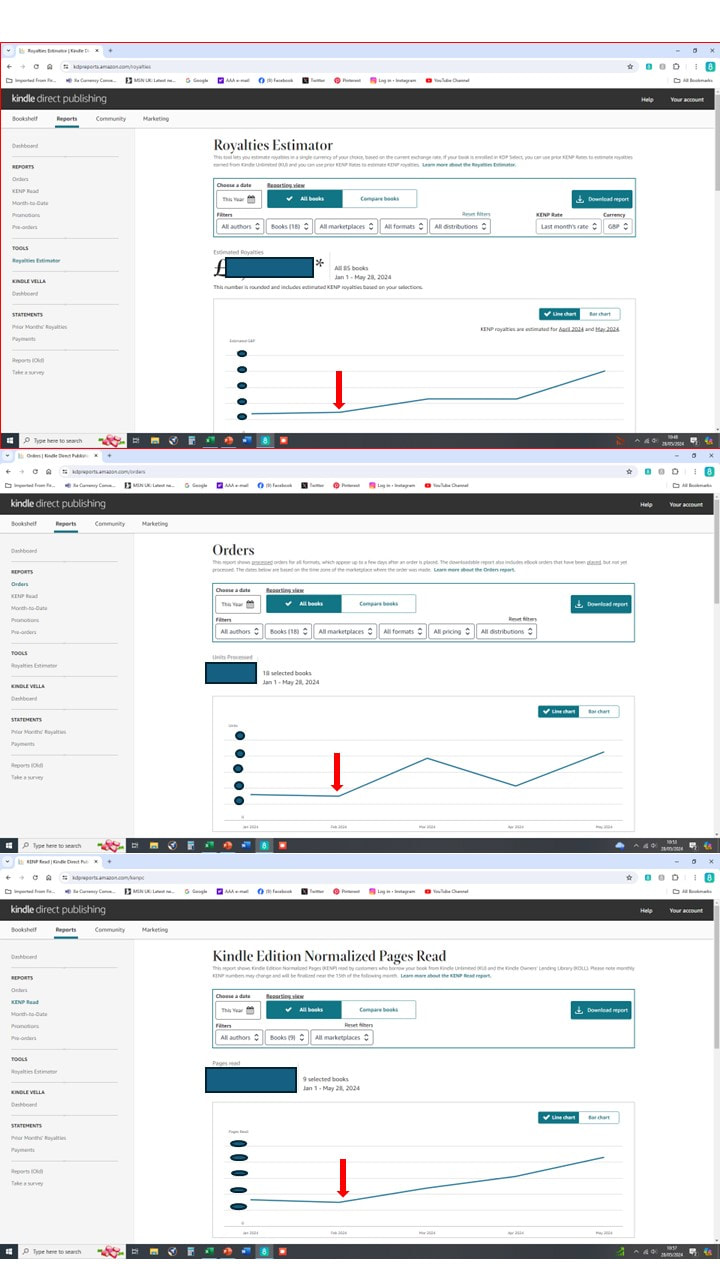
 RSS Feed
RSS Feed